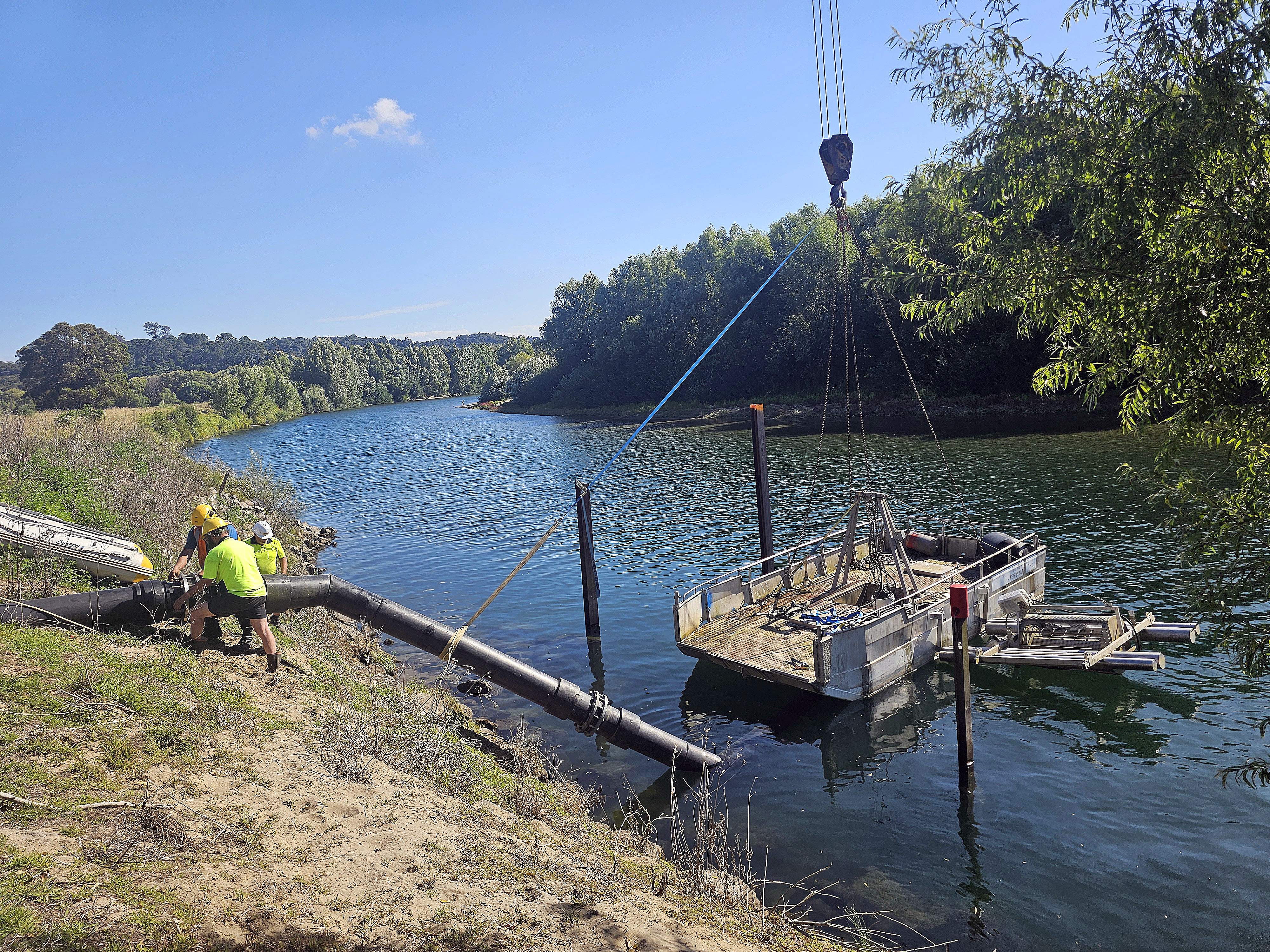Water restrictions until further notice

NESSIE FLOATED: Contractors install the emergency water inlet system “Nessie” in late January, after salinity was detected in the river near Te Tahi Street water treatment plan. Photo Diane McCarthy E5213-01
Diane McCarthy
If you were looking for an excuse to get out of washing the car this weekend, you’re in luck.
Whakatāne District Council has issued an urgent notice to its water customers from Ōhope to Thornton Road to conserve water because of a lack of rainfall in the Whakatāne River catchment area.
The restriction, announced on Wednesday, includes no washing of cars, boats or buildings, no using sprinklers and watering gardens only on alternate days – even street numbers on even days, odd street numbers on odd days – for a maximum of 20 minutes.
Low river flow has been given as the reason, causing salt water to intrude upstream during high tides, toward where water is taken from the river at the Te Tahi Street Water Treatment Station which provides water to Whakatāne’s reservoirs.
The council’s three waters manager, Jim Finlay, said saltwater had not yet reached the emergency water inlet structure, dubbed “Nessie”, about 1.5 kilometres upstream of the treatment plant. The emergency intake was placed into the river in January when salinity alarms were first triggered at the plant.
Due to high rainfall in recent years, it had been three years since Nessie was last required.
The council commenced using the emergency upriver intake about three weeks ago.
“If we do not receive sufficient rainfall in the upper catchment to increase river flow, we expect saltwater to reach the intake by the middle of next week,” Mr Finlay said.
“If and when this happens, we will need to halt water intake into Whakatāne Water Treatment Plant for as long as saltwater is present. Historically, this occurs when high tide overcomes river flow, typically lasting three-to-four hours, though it may extend if river levels drop further.
“At present, Nessie operates 24-7, producing approximately 7000 cubic meters of water a day with the pump at a comfortable level - enough to meet current demand without restrictions. A four-hour intake disruption would reduce production to around 6100 cubic meters.”
The town’s reservoirs hold enough water for 24 hours of supply during normal usage.
“To ensure supply remains sufficient, we encourage the community to reduce water consumption accordingly.”
The council is asking everyone to do their part to conserve water.
Planning, infrastructure and regulation general manager David Bewley said the restrictions were immediate and remained in place until further notice.
“Should conservation efforts fail and river levels continue to drop, further restrictions may be implemented, such as banning all hose use.
“We hope that situation can be avoided, but that's entirely dependent on the river flow and the ability of households and businesses to reduce their water use.”
Everyone is being asked to do their part.
Some simple conservation tips include, not refilling or topping up swimming pools, fixing leaks, flushing toilets only when necessary, avoiding baths and long showers and collecting water in a bucket while waiting for hot water to flow through to showers or taps.
Residents can stay up to date at whakatane.govt.nz/marchwaterrestrictions and via the council’s social media channels.